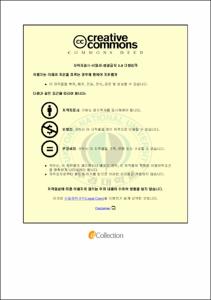부산지역 기숙사 고등학생들의 급식만족도 조사
- Abstract
- This study examines and analyzes the foodservice satisfaction using a sample of high school students living in dormitory in Busan. The main purpose of the study is to clarify unsatisfactory factors about foodservice among the dormitory students and to provide fundamental basis for finding ways to improve the quality of school foodservice.
For this purpose, the study conducted a survey using a sample of 400 boarding students enrolled in high schools in Busan with a research period between July 21st and July 31st in 2014. Among the retrieved responses, survey results from the 357 respondents(93.75%) were finally used for the analysis, which were statistically analyzed using SPSS 18.0. The study results can be summarized as below.
Out of the total sample, 83.8% ate breakfast every day, 96.9% ate lunch every day and 93.6% dinner every day, while more female students turned out to be eating daily breakfast compared to male students(P<0.05). The portion of students who ate up breakfast was 53.2%, and the proportions were 86.6% and 87.5% for lunch and dinner, respectively. More male students ate up the breakfast and dinner than female students(P<0.05), and the
proportion of students who ate up lunch was 95.8% for freshmen, 84.5% for sophomore and 82.4% for junior(P<0.05). As for the reason of leaving food behind, least favorite food was most frequent with 33.9%, followed by bad taste(23.5%), no appetite(18.8%), too much(15.1%), etc.(4.2%), lack of time(2.8%) and bad seasoning(1.7%). Average snack intake per day was once or twice(86.6%) and the types of refreshment turned out to be snacks(43.8%) and ice cream(37.9%).
Regarding food quality of the meal satisfaction, food temperature(4.17) and freshness (4.14) showed high satisfaction, while food taste(3.87) and consideration of preference about menu showed low satisfaction(3.78). As for the meal fee, male students(4.03) showed higher satisfaction compared to female students(3.76), (P<0.01). Freshmen revealed higher satisfaction than junior in food taste(P<0.05), menu diversity(P<0.01), food quantity(P<0.001) and healthy menu(P<0.01), while satisfaction on fresh ingredients was higher for freshmen compared to sophomore(P<0.05) and satisfaction on the consideration of menu preference was higher for freshmen/sophomore than junior(P<0.001). As for the service, menu information(4.57) and nutrition information provision(4.54) showed high satisfaction, while cafeteria noise(3.13) and distribution(3.80) showed low satisfaction. In cafeteria noise (P<0.01), feedback reflection(P<0.01) and new food provision(P<0.01), freshmen/sophomore showed higher satisfaction compared to junior students. Regarding cleanliness, uniform cleanliness of the servers(4.41) and cafeteria hygiene(4.20) showed high satisfaction, while tableware hygiene(3.93) showed low satisfaction. Moreover, freshmen revealed higher satisfaction on cleanliness compared to sophomore/junior(P<0.05).
As for the satisfaction of each meal, breakfast was 3.15, lunch was 4.04 and dinner 4.12, where male students showed higher satisfaction than female students in breakfast(P<0.05) and in dinner(P<0.05). As for the satisfaction of each meal according to school year, freshmen showed higher satisfaction than sophomore/junior in breakfast(P<0.001). Meanwhile, freshmen/sophomore showed higher satisfaction than junior in lunch(P<0.001) and freshmen showed higher satisfaction than junior in dinner(P<0.001).
As for the meal type preference of each meal, female students had stronger preference to Korean food compared to male students in breakfast(P<0.01) and they also showed stronger preference to Korean food than male students in dinner as well(P<0.05).
To sum up, it is necessary to search for a way of improving breakfast satisfaction by developing a variety of breakfast menus. The fact that preferred meal pattern differs in each meal should also be considered when providing the menu. More efforts to make quality enhancement are required, such as improvement in cafeteria noise, menu that considers preferences, cafeteria opening hour, etc. so that students can be provided with satisfactory school meals.
- Issued Date
- 2015
- Awarded Date
- 2015. 2
- Type
- Dissertation
- Publisher
- 부경대학교
- Affiliation
- 부경대학교
- Department
- 교육대학원 영양교육전공
- Advisor
- 류은순
- Table Of Contents
- Ⅰ.서론 1
1.서언 1
2.연구의 목적 4
Ⅱ.이론적 배경
1.학교급식의 정의 및 목적 5
2.고등학교 기숙사 급식 현황 6
3.급식만족도 8
Ⅲ.연구방법 10
1.조사대상 및 기간 10
2.조사방법 10
3.연구내용 11
4.자료 분석 12
Ⅳ.연구 결과
1.조사대상자의 일반사항 13
가.학생의 일반사항 13
나.학생의 신체계측과 체질량지수 15
2.급식만족도 평가 도구의 신뢰성 검증 17
3.식습관 19
가.일반사항에 따른 식사 횟수 및 섭취량 19
나.일반사항에 따른 음식을 남기는 이유 23
다.체질량지수와 건강상태에 따른 식사 횟수 및 섭취량 26
라.체질량지수와 건강상태에 따른 음식을 남기는 이유 29
마.하루 간식섭취 횟수 및 종류 31
4.급식 만족도 36
가.일반사항에 따른 급식 만족도 36
나.체질량지수와 건강상태에 따른 급식 만족도 39
다.식사 섭취량에 따른 급식 만족도 42
라.하루 간식 섭취횟수에 따른 급식 만족도 47
마.일반사항에 따른 식사 만족도 49
바.체질량지수와 건강상태에 따른 식사 만족도 51
사.식사 섭취량에 따른 식사 만족도 53
아.하루간식 섭취 횟수에 따른 식사 만족도 56
자.일반사항에 따른 식사 선호식단 56
차.체질량지수와 건강상태에 따른 식사 선호식단 61
Ⅴ.요약 및 결론 64
Ⅵ.참고문헌 67
Ⅶ.부록 72
- Degree
- Master
- Files in This Item:
-
-
Download
 부산지역 기숙사 고등학생들의 급식만족도 조사.pdf
기타 데이터 / 969.93 kB / Adobe PDF
부산지역 기숙사 고등학생들의 급식만족도 조사.pdf
기타 데이터 / 969.93 kB / Adobe PDF
-
Items in Repository are protected by copyright, with all rights reserved, unless otherwise indicated.